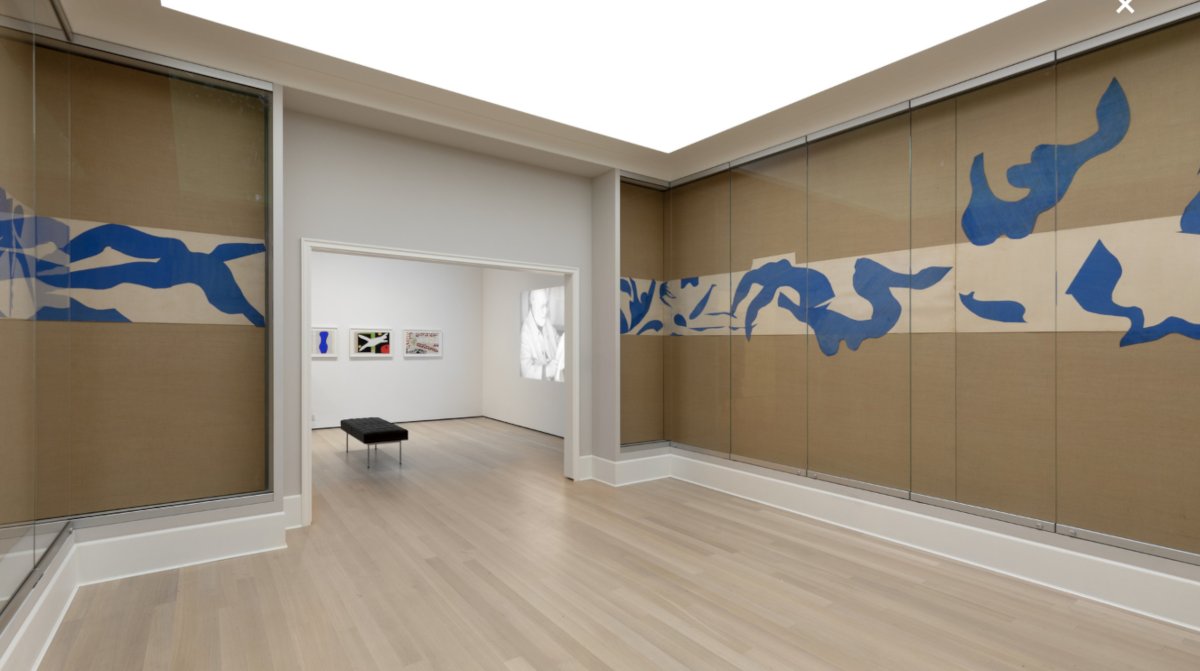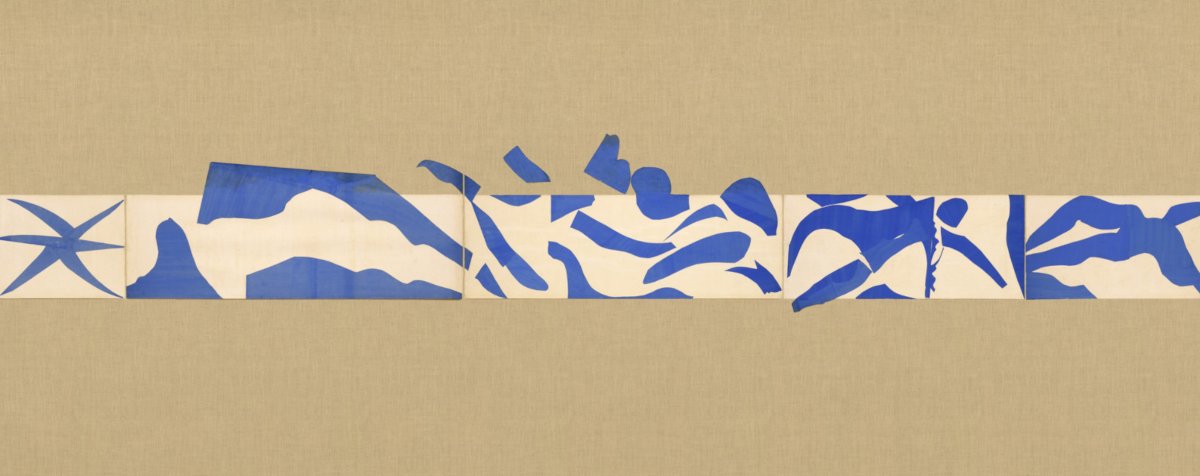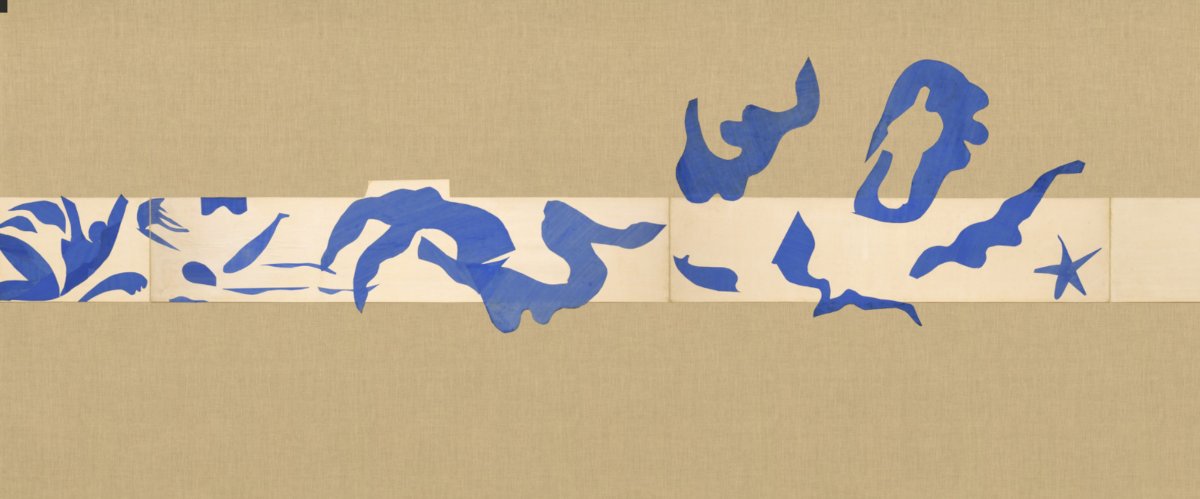Badger's eye view: Diving into Matisse

Main image: Henri Matisse’s Swimming pool (1952) installed at the Museum of Modern Art.
I have to spin to see all of Matisse’s Swimming pool. It wraps the room so like water, you are surrounded. By placing the blue figures on a cream band, they have a space they can jump out of. In turning, I want to hop just to move with the art, memories of play in pools over the years are triggered.
Matisse studied Poussin who constructed scenes of large crowds from mythology, history and Christianity. Poussin’s rendering is exactly what you expect from the 1670s, but there’s an obsession with composing space, and organizing multiple figures that Matisse found fascinating. In the Swimming pool each shape/figure plays off and moves on to the next, you have to spin to see the whole room.

Detail of Swimming pool (1952)
The large, last three figures on the right always challenge me about their identity.
They jump out of the white space that holds the strip.
Or are they plunging in?
With no heads or hands, they could be splashes as easily as figures.
But bumps go from breasts, bellies and butts to long lines that can be limbs.
By being both I have to process the whole thing, creating a movement in space.
The far right third figure is a dive into the pool, straight lines against curves, the pool is entered. Matisse does a foot, but no knee, the foot’s symmetry of toes, anatomically not correct but by giving it an arrow shape he pulls it out of toes into — are we sure it’s not a hand? Are we sure it’s a not a missile head?

Detail of Swimming pool (1952)
Without any representation the viewer has to make up their own idea what the figure is. It is more work for the viewer but it’s a deeper kind of work because the shapes are carefully constructed — it’s not a babe in a bikini.
For me this is an exercise in “if this, then that”. The scene is exploding energy. By not putting faces on his shapes Matisse makes us look. Much illustration often leave faces off and simplifies Matisse’s drawing to be every person to make the character generic so everyone can see themselves in the characters in a therapist chair.
Matisse makes the shapes into an experience of looking as active thought. This is the engagement of art.
Next: Joan Mitchell!

To comment, please send an email to submissions@uncomics.org.
Any comments may be subject to publication on this site only. Your contact information will not be shared with third parties.